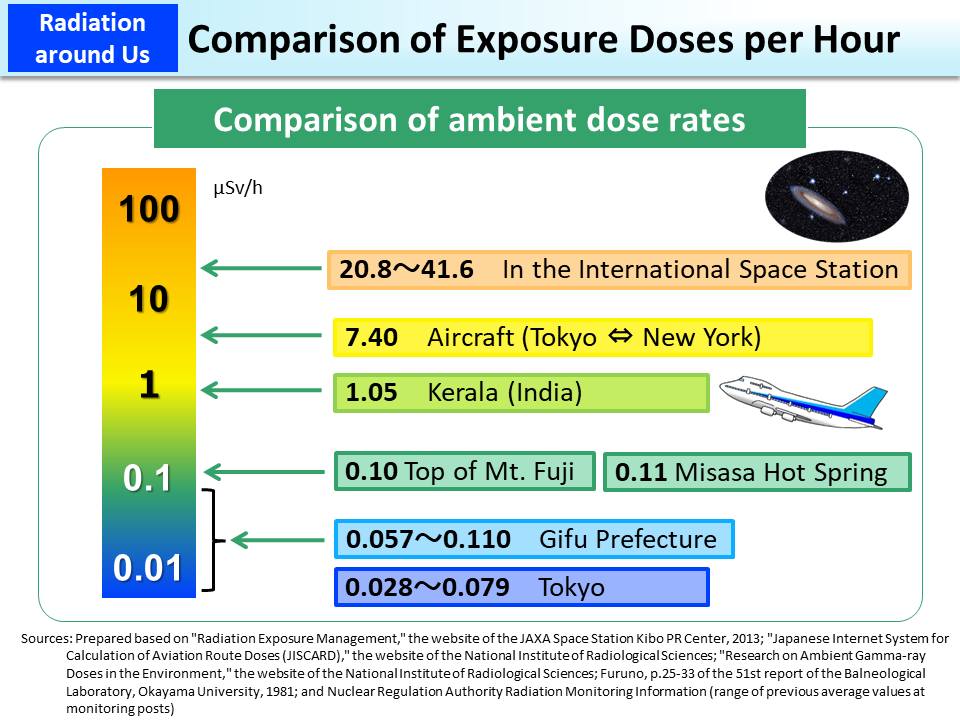Comparison of Exposure Doses per Hour
In outer space and aircraft, ambient dose rates are higher because of cosmic rays from galaxies and the Sun. Ambient dose rates are also high at high altitudes such as the top of Mt. Fuji, compared to low altitudes, because the influence of cosmic rays is stronger. At low altitudes, cosmic rays (radiation) interact with oxygen and nitrogen atoms in the atmosphere and thereby lose energy, resulting in reduced amounts of radiation reaching the ground. Accordingly, ambient dose rates become lower.
Ambient dose rates in most living spaces are in the range of 0.01 to 1 μSv/h, but there are areas where the level of natural radiation is high because soil there contains large amounts of radioactive materials, such as radium and thorium. Such areas are called high natural radiation areas (p.67 of Vol. 1, “Ground Radiation (World)”).
While there is no high natural radiation area in Japan, ambient dose rates are slightly higher in places where soil contains a lot of radium, such as Misasa Onsen Hot Springs, which is famous for radon hot springs (p.68 of Vol. 1, “Ground Radiation (Japan)”).
- Included in this reference material on March 31, 2013
- Updated on March 31, 2019

